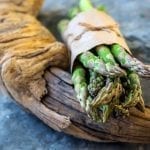Photo by Aarón Blanco Tejedor
As we age, most of us lose collagen from our skin with resulting wrinkles. While we spend a fortune in trying to renew and replace it, there are about 2.5 million people in the world, mostly women with European ancestry, with a condition whose body makes too much collagen.1,2
Scleroderma (meaning “hard skin”) is a rare disorder of the immune system, that interferes with the balance of collagen clearance and deposit, resulting in hardening of the skin and / or internal organs.1
Types and symptoms
Localized scleroderma presents with two types of typical patches: ‘morphea’ is smooth and shiny, usually appearing on the trunk, but they can affect any part of the body. In ‘Linear’ scleroderma the skin affected is in a line, usually along an arm or leg, it appears shiny, discolored or scarred, and often feels tight and uncomfortable.4
Scleroderma unfortunately may not be limited to the skin; in systemic scleroderma, the heart, blood vessels, kidneys, lungs, genitourinary and digestive systems can all be involved. In fact, in CREST syndrome, a form of progressive systemic sclerosis, there is relatively limited involvement of the skin.3 The most common symptoms include swelling of the hands and feet, joint pain and stiffness and blood vessel damage leading to elevated blood pressure and a physical over-reaction to cold or stress, called Raynaud’s’ Syndrome. The symptoms vary for each person, and the severity depends greatly on which parts of the body are affected.1
Predisposing and triggering factors
Scleroderma usually begins with damage of the inside lining of the blood vessels by either viruses or free radicals and in 30% of the cases anti-endothelial cell antibodies are detected in the blood.5 This vascular damage leads to the leakiness of the blood vessel and tissue oedema with impaired repair, elevated blood vessel growing and blood clotting factors, while high levels of fibroblasts lead to high collagen deposition and extracellular matrix formation. There is an imbalance between dilation and constriction of the blood vessels to the favor of constriction.6,7
Both genetics and environment play a part in the development, with HLA gene and several toxins identified as triggers. A family history of autoimmune connective tissue diseases, such as lupus, may increase the risk of developing scleroderma.8
Low levels of vitamin D are very common in systemic sclerosis. Poor vitamin status seems to be related with a more aggressive disease with multiple and severe organ involvement, especially pulmonary and cardiac involvement.10
Treatment options & Natural solutions
While medical treatment with drugs focuses on reducing symptoms and suppressing the immune system,9 research shows that about 30% of patients with scleroderma are at risk of malnutrition and in 5–10% of patients, gastrointestinal disorders are the leading cause of death.11 Improving digestion not only improve quality of life, but since 80% of the immune system resides in the gut and is regulated from there by the microflora it should be the base of any treatment plan.12
The root is in the gut
Eliminating foods that may aggravate the digestive tract, contribute to intestinal hyperpermeability (leaky gut) and trigger the immune system has been a powerful tool of many functional medicine trained doctors. These foods include gluten, lectins, saponins, casein and solanine – the latter from the deadly nightshade family. A meticulous re-introduction challenge then can identify individual triggers. A simple blood test can also show specific food allergies and intolerances.
Intestinal dysbiosis – the imbalance between the beneficial and problematic microbes, have been associated with many autoimmune conditions, while balancing the gut microbes may bring great improvements.12,13 In a small pilot study,14 two strains of probiotics (Bifidobacterium infantis and Lactobacillus GG) were supplemented to systemic sclerosis patients short term, and it greatly improved their digestive complaints. Animal trials have highlighted probiotics immune balancing properties as well, however human clinical trials are limited – mostly due to our vast variety of unique microbiome yet to be fully understood.13 In some cases, probiotic therapy alone cannot bring the proposed effect and stool analysis may reveal aggressive pathogenic microorganisms in the background.
Healing Foods
Certain foods have a profound healing effect on our healing processes due to their effect on a transcription factor with the catchy name of nuclear factor erythroid-2-related factor 2 (or Nrf2 for short), which activates the transcription of over 500 genes in our DNA, most of which have cell-protective and renewing functions. Nrf2 activation leads to increased detoxification and excretion of both organic xenobiotics and toxic metals; its action via over two dozen genes increases highly coordinated antioxidant activities; it produces major anti-inflammatory changes; it stimulates mitochondrial biogenesis and function – thus energy increase; and it stimulates self-cleansing, removing toxic protein aggregates and dysfunctional organelles.15
The foods with the most potential Nrf2-activation capacity include:
- EPA and DHA from fish oils
- Carotenoids – of which lycopene may be the most active
- Isothiocyanates from cruciferous vegetables, especially broccoli sprouts;
- Sulfur compounds from allium vegetables (garlic);
- Terpenoids – from turmeric, cinnamon, clove, ginger, and cannabinoids
- Olives and red wine polyphenols
- Cynaropicrin from artichokes
Exercise and caloric restriction (as in intermittent fasting or time restricted feeding) also up-regulate this health promoting factor.15, 16, 17
Get the right diet for You
As we are all unique with individual genetic make-up and medical history it is best if you take a personalised approach – investigate with functional tests and embark on a nutrition plan that best suits Your needs and lifestyle.
Contact me to find Your ‘root’ to better health!
References:
1, National Institutes of Health 2016. Scleroderma. U.S. Department of Health and Human Services. (Accessed on 29-05-2018) [Available at: https://www.niams.nih.gov/health-topics/scleroderma/advanced]
2, Barnes J. & Mayes MD 2012. Epidemiology of systemic sclerosis: incidence, prevalence, survival, risk factors, malignancy, and environmental triggers. Curr Opin Rheumatol.;24(2):165-70. doi: 10.1097/BOR.0b013e32834ff2e8
3, Kondo, H. 2000. CREST syndrome; a changing clinical significance. Intern Med.;39(6):437. doi.org/10.2169/internalmedicine.39.437
4, Scleroderma & Raynaud’s UK. 2016. What is Scleroderma. [Available at: https://www.sruk.co.uk/scleroderma/what-scleroderma/] accessed 29-05-2018.
5, Greenblatt MB. & Aliprantis AO. 2013. The immune pathogenesis of scleroderma: context is everything (PDF). Current Rheumatology Reports; 15(1):297. doi:10.1007/s11926-012-0297-8
6, Katsumoto TR, Whitfield ML. & Connolly MK. 2011. The pathogenesis of systemic sclerosis. Annual Review of Pathology; 6:509–37. doi:10.1146/annurev-pathol-011110-130312
7, Balbir-Gurman A, Braun-Moscovici Y (2012). “Scleroderma – New aspects in pathogenesis and treatment”. Best Practice & Research Clinical Rheumatology; 26(1):13–24. doi:10.1016/j.berh.2012.01.011
8, Dospinescu P, Jones GT. & Basu N. 2013. Environmental risk factors in systemic sclerosis. Current Opinion in Rheumatology; 25(2):179–83. doi:10.1097/BOR.0b013e32835cfc2d
9, Adnan, ZA 2008. Diagnosis and treatment of scleroderma. Acta Med Indones.; 40(2):109-12. [Available at http://www.inaactamedica.org/archives/2008/18560030.pdf ]
10, Groseanu, L. et al. 2016. Low vitamin D status in systemic sclerosis and the impact on disease phenotype. European Journal of Rheumatology, 3(2), 50–55. doi: 10.5152/eurjrheum.2015.0065
11, Recasens MA, Puig C. & Ortiz-Santamaria V. 2012. Nutrition in systemic sclerosis. Reumatol Clin.;8(3):135-40. doi: 10.1016/j.reuma.2011.09.006.
12, Geuking MB, Köller Y, Rupp S. & McCoy KD. 2014. The interplay between the gut microbiota and the immune system. Gut Microbes.;5(3):411-8. doi: 10.4161/gmic.29330.
13, de Oliveira GLV. et al. 2017. Intestinal dysbiosis and probiotic applications in autoimmune diseases. Immunology.;152(1):1-12. doi: 10.1111/imm.12765.
14, Frech TM et al. 2011. Probiotics for the treatment of systemic sclerosis-associated gastrointestinal bloating/ distention. Clin Exp Rheumatol.;29(2 Suppl 65):S22-5.
15, Pall ML. & Levine S. 2015. Nrf2, a master regulator of detoxification and also antioxidant, anti-inflammatory and other cytoprotective mechanisms, is raised by health promoting factors. Acta Physiologica Sinica; 67(1): 1–18 doi: 10.13294/j.aps.2015.0001
16, Martínez-Huélamo, M. et al. 2017. Modulation of Nrf2 by Olive Oil and Wine Polyphenols and Neuroprotection. Antioxidants, 6(4):73. doi: 10.3390/antiox6040073
17, Takei, K. et al. 2015. Cynaropicrin attenuates UVB-induced oxidative stress via the AhR-Nrf2-Nqo1 pathway. Toxicol Lett.;234(2):74-80. doi: 10.1016/j.toxlet.2015.02.007.



